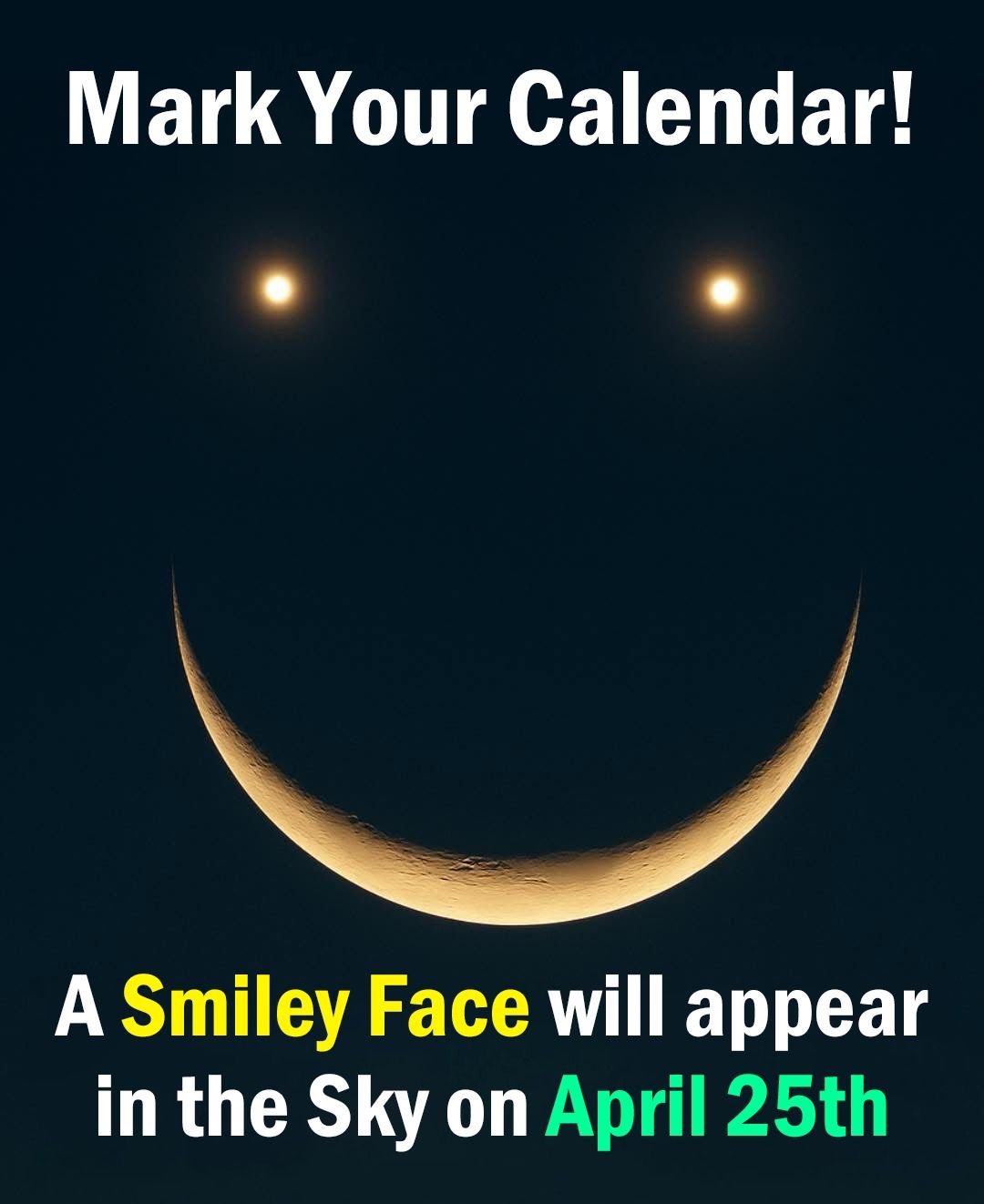Get ready to wake up early on April 25, 2025, because something truly special is about to light up the sky. Skywatchers around the world will be treated to a rare and delightful celestial sight—Venus, Saturn, and a crescent moon will align in a way that forms what astronomers are calling a “cosmic smile.” Unlike other stargazing events that require telescopes or dark skies, this alignment is easy to spot with the naked eye if you have a clear view of the eastern horizon before sunrise. So, if you’re looking for a reason to set that alarm extra early, this one’s for you.

This phenomenon is a triple conjunction, where three celestial objects appear close together in the sky. In this case, bright Venus will serve as one “eye,” Saturn as the other, and a thin crescent moon will complete the smile just below them. According to NASA Solar System Ambassador Brenda Culbertson, “Venus is higher above the eastern horizon with Saturn lower, and a thin crescent Moon a bit lower and a little farther north. The thin crescent Moon looks like a smile.” The arrangement of these bright bodies forms a triangle that resembles a cheerful face beaming down at Earth.
The best time to view this spectacle is around 5:30 a.m. local time. Visibility lasts for roughly an hour before sunrise, so timing is key. Make sure to head out early while the sky is still dark to get the full effect. It takes a few minutes for your eyes to adjust to the darkness, so give yourself that buffer to let the planets come into view. Venus will be particularly noticeable—it’s the brightest planet in the sky and will shine about 25 times brighter than Saturn. While Saturn is dimmer, its golden hue still makes it easy to distinguish. Both will look like bright stars to the naked eye, since planets don’t appear as discs without magnification.
To get the most out of this rare event, you’ll need a clear, unobstructed view of the eastern horizon. Ideal locations include beaches facing the ocean, open rural fields, mountaintops, or any elevated area free from buildings and trees. If you’re in an urban area, try to escape the light pollution by heading to a park or designated dark-sky location. Free light pollution maps online can help you find the best nearby viewing spots. And don’t forget to check the weather forecast—a cloudy morning could block your view entirely, so have a backup location in mind just in case.
Binoculars can enhance your view by revealing details of the moon’s surface or making the planets appear brighter. A pair of 7×35 or 10×50 binoculars stabilized on a tripod is perfect for casual observers. If you have a telescope, you’ll be able to see even more detail—Saturn’s iconic rings, Venus’s phases, and the intricate shadows along the moon’s crescent. For photography lovers, newer smartphones with night modes can capture impressive shots if mounted on a tripod. Use a timer or voice command to avoid camera shake, set focus to infinity, and take multiple shots with different settings. If you’re using a DSLR or mirrorless camera, shoot in RAW, use a wide aperture (f/2.8 or lower), and experiment with ISO levels between 800 and 3200 and exposure times of 5 to 15 seconds.
This event is also a great way to introduce kids to astronomy. The smiley face pattern is visually engaging and easy to point out. Parents can prepare their children with a quick overview of planets, organize drawing activities afterward, or even take basic photos together as a fun science project. Be sure to dress warmly—temperatures tend to be coolest just before dawn. Bring along thermoses of hot drinks, blankets, and some folding chairs to make it a cozy family outing. Red-filtered flashlights help navigate the area without ruining your night vision.
And there’s more happening in the sky this month. The Lyrid meteor shower peaks on April 21–22, producing about 10 to 15 meteors per hour under optimal conditions. You might even catch a few stragglers during your cosmic smile viewing session. Plus, Mars will be in opposition on April 19, making it appear larger and brighter throughout the month—perfect for telescope users. If you’re in the northern hemisphere, constellations like Leo, Virgo, and Boötes will dominate the night sky. In the southern hemisphere, look out for the Southern Cross and Centaurus.
Don’t forget about the International Space Station—it’ll be making several visible passes during April. Use websites or mobile apps to find when it will appear above your location. It usually looks like a fast-moving bright star crossing the sky for about three to five minutes.
So mark your calendar: April 25 at 5:30 a.m. is your chance to witness a rare, smile-shaped planetary alignment that doesn’t come around often. With a little planning and an early wake-up call, you can catch this once-in-a-blue-moon event that’s bound to make you—and the sky—smile.





